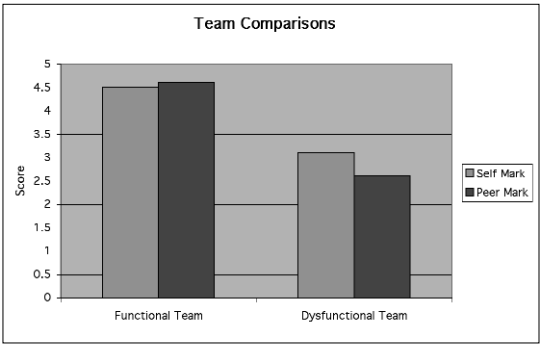What are teams and what ties into teams?
A team is a group of individuals who share certain goals, objectives, and a mission, and participate in a number of activities to accomplish these. Team learning orientations and behaviors are essential, because they reflect team members’ common learning goals, as well as their understanding of the importance of learning and development. Learning orientation allows the team to ensure successful learning process and the accomplishment of its goals. In turn, Workgroup Emotional Intelligence (EI) refers to the ability of team members to manage their emotions, as well as the emotions of other individuals, in a way that assists in practical and theoretical problem solving. High emotional intelligence is associated with better performance in all aspects of management.
Workgroup Emotional Intelligence Profile
Workgroup Emotional Intelligence Profile was developed to profile emotional intelligence of the team members, and there are different workshop activities that can be used to develop EI. Some examples include emotional acceptance exercises, temperament analysis, role plays, and communicative skill development games.
Thompson (2017) “Making the team: A guide for managers”
This book is a detailed introduction to team management that can help both leaders and team members to develop highly valuable management and communication skills. It starts with the basics of team work, defining “a team”, as well as its characteristics, such as interdependence, boundedness, stability, authority, and social system context. One of the conclusions the book makes is that “the leader’s work does not stop when the team is built; the focus of the leader is to coach the team to work through different issues” (Thompson, 2017, p. 119). Teams also have different moods, personalities, and emotions, which determine how team members feel to each other and how cohesion is built. In addition, the book discusses the importance of a shared knowledge base, “decision-making procedures, such as veto policies and pre-established criteria”, and conflict management strategies. Team members should “depersonalize” conflict and “deal with it proactively” to make it an aspect of high-performance teamwork” (Thompson, 2017, p. 229).
Kannaiah and Shanthi (2015) “A Study on Emotional Intelligence at Work Place”.
This article focuses on Emotional Intelligence and its role in work relationships and performance. It describes the ways emotionally intelligent team members identify, use, understand, and regulate their emotions. The authors present a list of determinants and factors of employees’ Emotional Intelligence. These include employees’ relationships, adaptability, initiative, responsibility, leadership, optimism, loyalty, empathy, and emotional competence. Kannaiah and Shanthi have studied employees’ awareness “towards emotional intelligence”.




The results of their research showed that “61.3% of the employees are able to identify and understand the cause of their emotions, 20% don’t understand their emotions, and 18.7% are able to understand only sometimes” (p. 152). In terms of control, “52% do not control their emotions, 34% of the respondents are able to control their emotions sometimes, whereas 14% are unable to control emotions”. As for understanding their colleagues’ emotions, 65.3% of employees answered positively, while 34.7% of the employees showed a lack of understanding.
Călinici, Călinici, Balaszi, and Miclea (2020) “Development and validation of a new ability-based measure of emotional intelligence: Cluj emotional intelligence scale CEIS”.
This research aims to develop a new “self-report Emotional Intelligence measure to asses EI abilities” of the team members. The study defines EI as “abilities to monitor and distinguish self and other’s emotions and to use them as information for cognition and action” (Călinici et al., 2020, p. 335). The authors also discuss the advantages and disadvantages of different types of EI measures, concluding that “self-report ability-based scales might be a good solution” (p. 337). The validation of the scale was conducted using “item analysis (correlation matrix) and dimensionality analysis of a scale”. The Davies’ model of four dimensions acted as a background of the scale. Compared to relevant scales and other EI measures, CEIS shows “suitable levels of convergent validity, discriminant validity, and predictive validity” (p. 356).
Ansari and Talan (2017) “Emotional intelligence and work engagement as mediators of Big Five personality and knowledge sharing”.
This study examines various interpersonal psychological factors and the relationships between them. The study utilized instruments such as Workgroup Emotional Intelligence Profile, Big Five personality traits scale, Knowledge Sharing Behavior, and other tools. Work engagement and EI have appeared to be the “top predictors of knowledge sharing” (Ansari & Talan, 2017, p. 22). Among other factors, the study identified emotional stability and conscientiousness as having the highest degree of influence on the level of work engagement in the team.
Luca and Tarricone (2001) “Does emotional intelligence affect successful teamwork?”
This study investigated a group of final year students, who were doing a project as a team. The teams of students were monitored and interviewed in order to identify and evaluate the factors that contribute to successful teamwork. The researchers used the following criteria to assess the team members’ behaviors: self-awareness, self-regulation, motivation, empathy, and social skill. The results of the research have showed a strong connection between Emotional Intelligence and productive, harmonious relationships within the teams. Functional teams demonstrated positive outcomes according to all the criteria mentioned, whereas dysfunctional teams lacked these skills and abilities.

References
Ansari, A. H., & Talan, A. (2017). Emotional intelligence and work engagement as mediators of Big Five personality and knowledge sharing. Global Journal of Enterprise Information System, 9(3), 16.
Călinici, M. S., Călinici, T., Balaszi, R., & Miclea, M. (2020). Development and validation of a new ability-based measure of emotional intelligence: Cluj emotional intelligence scale CEIS. Cognition, Brain, Behavior. An Interdisciplinary Journal, 24(4), 335-363.
Kannaiah, D., & Shanthi, R. (2015). A study on emotional intelligence at work place. European Journal of Business and Management, 7(24), 147-155.
Luca, J., & Tarricone, P. (2001). Does emotional intelligence affect successful teamwork? Proceedings of the 18th Annual Conference of the Australian Society for Computers in Learning in Tertiary Education, 367-376.
Thompson, L. (2017). Making the team: A guide for managers (6th ed.). Pearson.